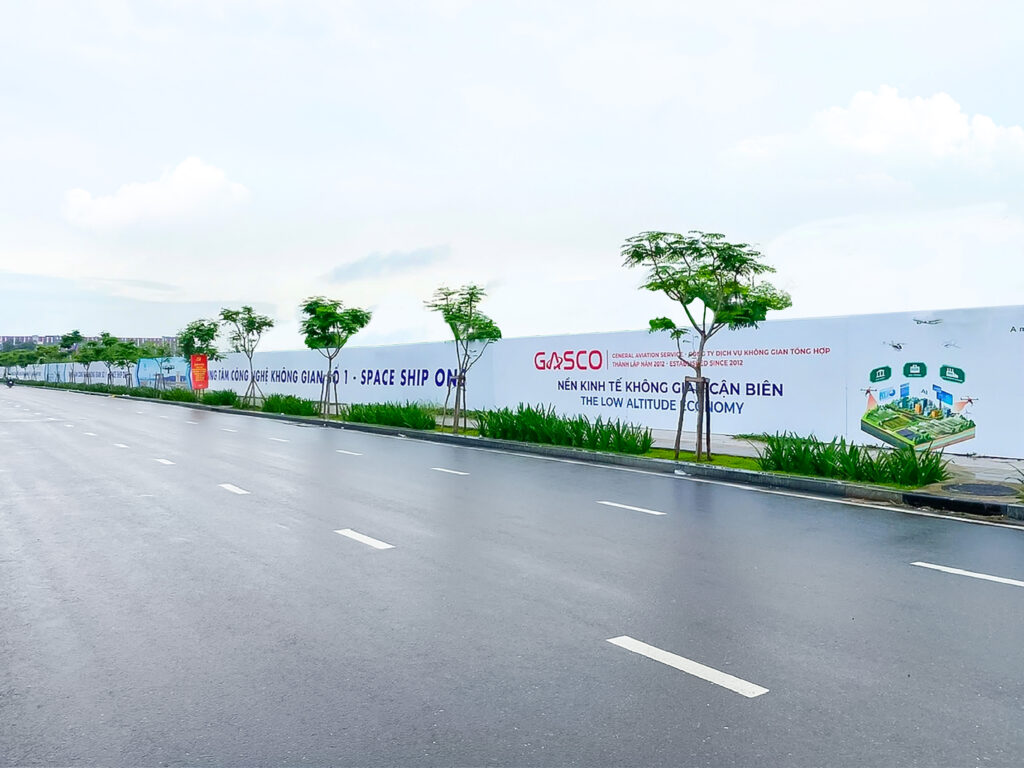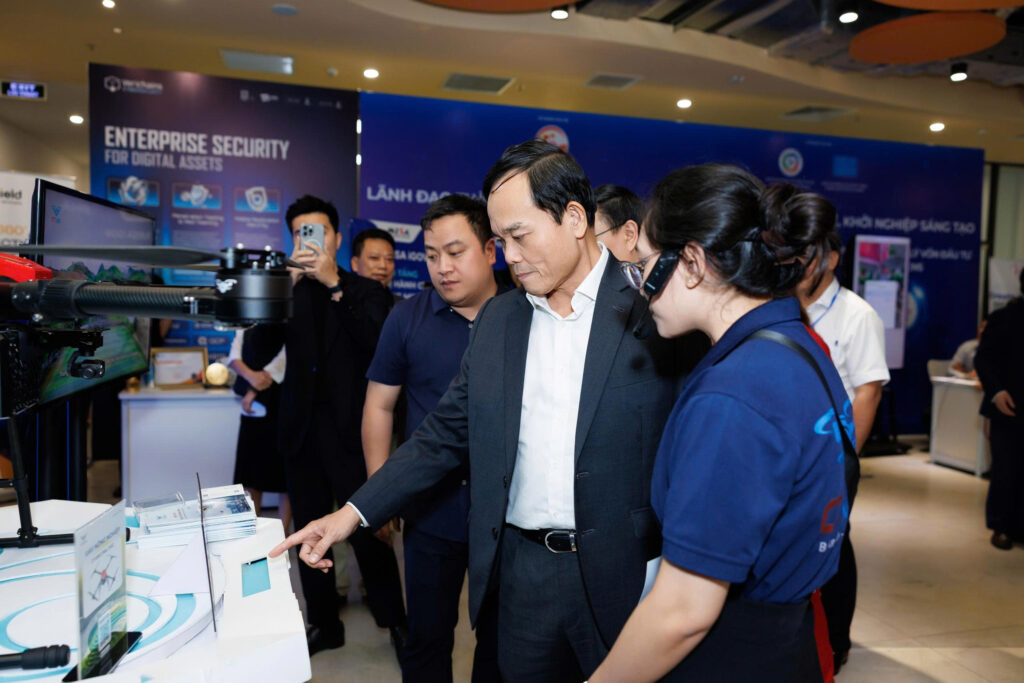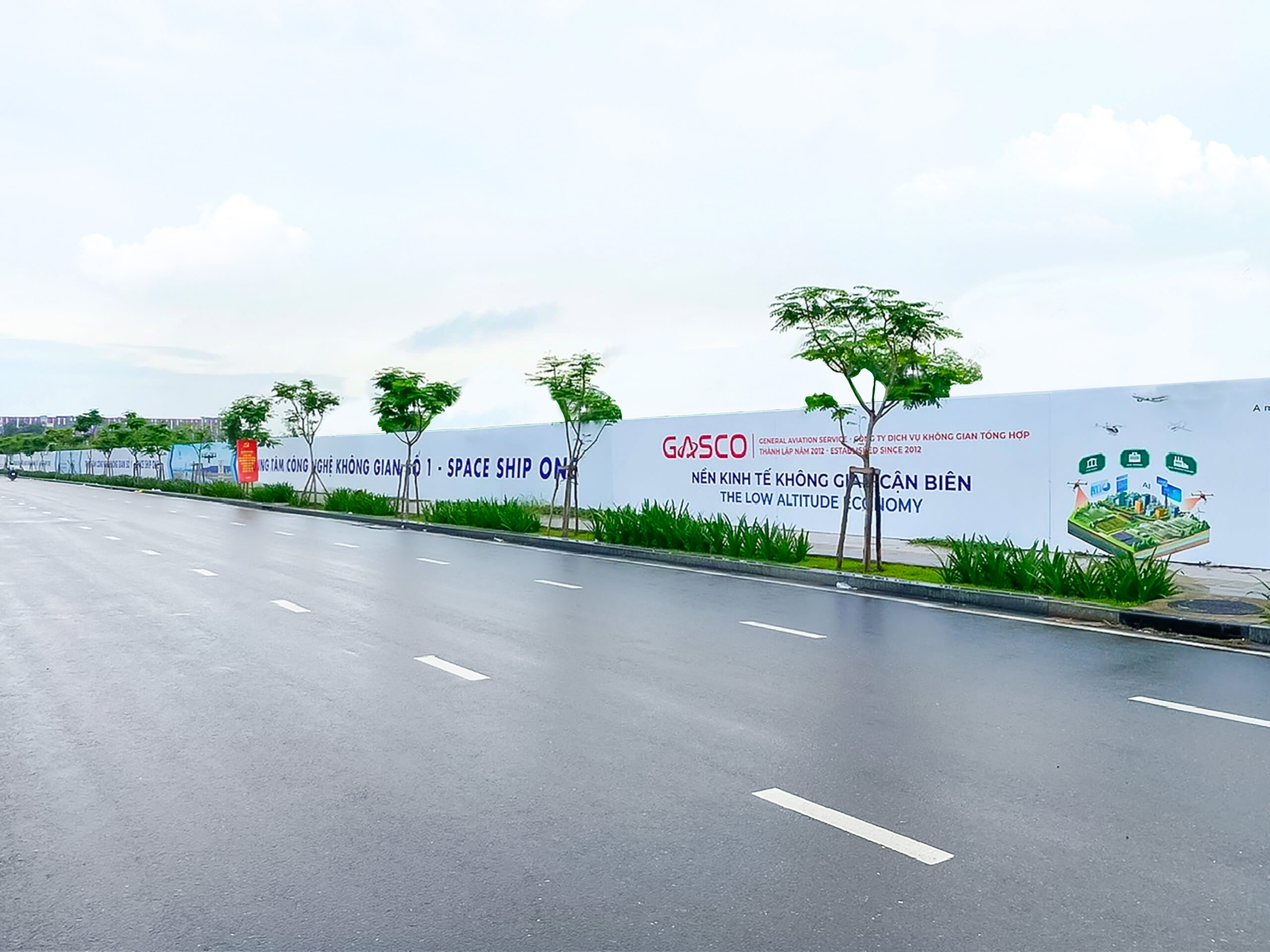The history of Vietnam’s development, as well as the 40-year period of Renovation, has shown that whenever the entire nation unites in development thinking and shared belief, and acts with collective determination, no matter how difficult the challenge or how great the risk, a path forward will always be found.
At this moment, the era of a prosperous, dynamic, and increasingly global Vietnam is taking shape. These are the four major resolutions of the Politburo, together forming a unified whole in strategic thinking and action for the country’s development in the new era. Along with that are the viewpoints, objectives, targets, and breakthrough, decisive action solutions stated in the Draft Political Report of the 13th term Central Committee, to be presented at the 14th Congress of the Party. All are aimed at realizing the burning aspiration: to write the Vietnamese miracle.

Researching strategic technologies in Viettel’s laboratories
The “golden key” to realizing the nation’s 2 centennial goals is gradually taking shape as Resolution No.57-NQ/TW is issued, laying the foundation for an innovation ecosystem. Vietnam will not only leapfrog and stay ahead, but is now marching in step with the world, driven by the aspiration to master strategic and core technologies.
Answering the question: Can Vietnam do it?
The volume of work that CT Group has accomplished in just 6 months since the Politburo issued Resolution No. 57-NQ/TW on breakthroughs in the development of science, technology, innovation, and national digital transformation is equivalent to that of 2 years. Mr. Trần Kim Chung, Chairman of CT Group, reported this at the Conference on “80 years of enterprises accompanying the nation,” held at the end of August 2025 and chaired by the Prime Minister.
Of course, what Mr. Chung meant was not merely about quantity. He shared that in August 2025, CT Group was selected by the Government of Indonesia as the key partner in developing a Low Altitude Economy and the UAV industry, serving sectors such as energy, agriculture, and forestry… Earlier, CT Group, together with the Hanoi People’s Committee and Gelex Group, had broken ground on the 4.0 Innovation Center in Hanoi, built on the foundations of AI, Web3, and blockchain…
At the end of June 2025, CT Group unveiled its first 12-bit high-speed, 200 MSPS chip prototype, entirely 100% designed by Vietnamese engineers. According to the plan, the chip will be manufactured by TSMC (Taiwan, China) starting in July, packaged and completed at the ATP semiconductor plant of CT Semiconductor in November, and commercialized beginning in December 2025…
“Resolution No. 57-NQ/TW has truly ignited great enthusiasm among businesses. We are determined to answer one crucial question: Can Vietnamese private enterprises develop core technologies?” Mr. Chung shared.
He even revealed that he is nurturing a long-term 20-year program called “Vietnamese Enterprises Go Global” – a vision to bring Vietnamese businesses to the world through science, technology, innovation, and digital transformation. Its ambitious goal is that by 2045, when the nation celebrates 100 years of independence, Vietnam will compete with the great powers of the five continents, become one of the global top 10 countries in technology and innovation.
Of course, to achieve this, the passion and determination of only a few enterprises or certain business sectors will not be enough.
In the Draft Political Report of the 13th term Central Committee, to be presented at the 14th Congress of the Party, a new growth model has been defined, identifying science and technology, innovation, and digital transformation as the main driving forces. Accordingly, it can be envisioned that the activation of the national breakthrough strategy for the development of science and technology, innovation, and digital transformation, as required by Resolution No. 57-NQ/TW, will become a key driving force, forming new value chains closely associated with innovation, digital transformation, green transition, energy transition, and the restructuring and quality enhancement of human resources, with a particular focus on the development of AI.
Lieutenant General Tao Duc Thang, Chairman and General Director of Viettel Group, clearly perceives both the development requirements and the vast opportunities that Resolution No. 57-NQ/TW has opened up. “Right after reading Resolution No. 57-NQ/TW, I immediately recognized a long-term development opportunity for Viettel. The resolution has provided significant institutional ‘liberation,’ enabling organizations and individuals to feel more confident and bolder in investing, experimenting, mastering, and applying new technologies to create breakthroughs,” Mr. Thang shared enthusiastically.
Viettel immediately took action with the spirit of “doing early, doing fast, doing breakthrough, and doing at lightning speed”, the hallmark of Vietnam’s leading technology enterprise. A series of products demonstrating technological self-reliance have since been created, such as 5G Open RAN, training simulation systems, and communication devices, …
Not only that, Viettel has exported tens of millions of US dollars worth of goods to the Middle East, India, the Philippines,… the group quickly began construction of Vietnam’s first large scale standard data center, with a total investment of nearly 1 billion US dollars in April 2025. It is also investing another 1 billion US dollars to begin work on 2 major national projects: the An Khanh Data Center and the Viettel Research and Development Center, aimed at strengthening infrastructure and accelerating research on strategic national technologies assigned to the group…
“The journey to mastering core technologies at Viettel allows no hesitation or compromise. Viettel has only one path to reach the goal with the fastest speed, the best quality, and the highest sense of responsibility, in the spirit of Resolution No. 57-NQ/TW,” Mr. Thang emphasized.
The foundation of the new growth model
The participation, strong cooperation of major domestic technology enterprises not only answer the question, “Can Vietnam achieve technological self-reliance?”, but also affirm the power of synergy when Resolution No. 57-NQ/TW is no longer seen as solely a matter of the State. At a recent conference reviewing the implementation progress of Resolution No. 57-NQ/TW, the Central Steering Committee for the development of science, technology, innovation, and digital transformation recognized this very point.
As a result, after 9 months of implementation, Resolution No. 57-NQ/TW has shown positive progress and achieved important initial results. The development and improvement of institutions and policies have been accelerated, helping to remove long-standing bottlenecks and create an increasingly consistent legal framework; the digital infrastructure is gradually taking shape, while digital platforms, applications, and services serving citizens and enterprises have begun to show substantive improvements.
However, various shortcomings, limitations, difficulties, and challenges have also emerged from practical implementation.
Mr. Kelly Wong, Chief Executive Officer of VNG Group, analyzed that what is still lacking is a continuous and multi-layered capital flow suited to each stage of development for technology enterprises. This includes venture capital during the experimental phase, growth capital to help companies expand, and public market capital through IPOs, which enhances transparency and corporate governance capacity.
“When there is a clear capital exit pathway, venture capital and private equity funds will be more confident in making investments. Domestic investors will also have the opportunity to participate in the success stories of Vietnamese start-ups. At the same time, an optimal and transparent IPO mechanism will attract stronger inflows of international capital, helping to form globally oriented technology enterprises that lead the market and create core technologies, as envisioned by Resolution No. 57-NQ/TW,” Mr. Kelly Wong said.
Meanwhile, drawing from Viettel’s experience, Mr. Tao Duc Thang emphasized the importance of government support in paving the way for enterprises to access advanced global technologies. Depending on the field, such support may come in various forms, from budget, technology, and working conditions… to market access and ecosystem development. In particular, for start-ups that still have limited resources, output-oriented support can help foster the formation of a strategic technology ecosystem.
“This is extremely important, because strategic technologies do not necessarily lead to strategic products. Having strategic products does not automatically create a strategic industry. But if we can build a strategic technology ecosystem that gives rise to strategic products, it will in turn form a diverse ecosystem, laying the foundation for a sustainable strategic industry, as set out in Resolution No. 57-NQ/TW,” Mr. Thang proposed.
From a macro perspective, Dr. Nguyen Quan, Chairman of the Vietnam Automation Association, emphasized 3 actions that must be taken immediately.
First, ministries, sectors, and localities must promptly select the technologies from the list of 11 key technology groups, and based on that, place orders with research institutes, universities, and scientists.
Second, Science and Technology Development Funds and Venture Investment Funds must be established immediately at the ministerial and provincial levels, and operated in a public, transparent, and effective manner.
Third, policies for scientific personnel incentives and mechanisms for commercializing research results should be issued to turn “scientific seeds” into “industrial fruits.”
Moreover, Minister of Science and Technology Nguyen Manh Hung is formulating a policy framework to provide output support for strategic products through government procurement and by allocating 10 to 20 percent of funding from the Science and Technology Development Fund. In addition, a voucher mechanism is being considered, under which the Government would grant support vouchers to enterprises engaged in technological innovation. Under this mechanism, type 1 mechanism is intended for enterprises that hire research organizations to improve production processes and products; type 2 mechanism for enterprises to purchase and test new domestic technologies. Mr. Hung also proposed that the Government establish a mechanism to assign and contract enterprises to develop national shared digital platforms…
Clearly, the key issue lies in developing institutional frameworks that encourage the participation of all parties, both the Government and Enterprises in innovation and the advancement of science and technology.
General Secretary To Lam affirmed that removing institutional bottlenecks must be considered the foremost breakthrough task. This includes establishing data governance frameworks to break down “territorial mindsets”; institutions on intellectual property and commercialization of research outcomes to connect research institutes – universities with the market; public – private cooperation mechanisms to mobilize social resources… and, importantly, strong institutions capable of protecting officials who dare to think, dare to act, and dare to take responsibility for the common good.
At that point, Resolution No. 57-NQ/TW will truly become the “golden key” to achieving the nation’s growth objectives, including the 2 centennial goals, to become a modern industrial developing country with upper-middle income by 2030, and a developed, high-income nation by 2045.
Vietnam will advance toward prosperity and stand shoulder to shoulder with the great powers of the five continents, built upon a foundation of self-reliance and autonomy in the development of science and technology. This will also mark the position from which Vietnam steps forward into global integration, driven by the aspiration to co-create global value.
________________________
Follow CT Group on Facebook for the latest updates and news!






